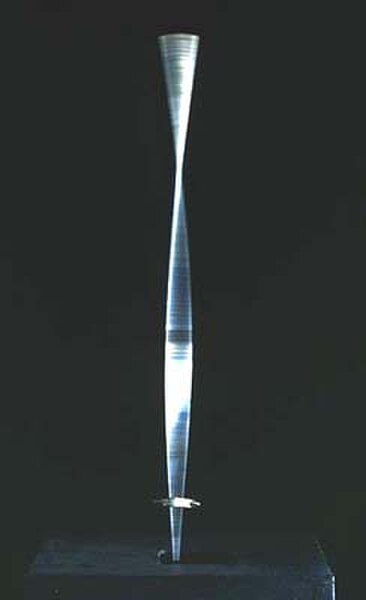Wen-Ying Tsai was a Chinese-American pioneer cybernetic sculptor and kinetic artist best known for creating sculptures using electric motors, stainless steel rods, stroboscopic light, and audio feedback control. As one of the first Chinese-born artists to achieve international recognition in the 1960s, Tsai was an inspiration to generations of Chinese artists around the world.
Multikinetic Wall (1965)
Cybernetic Sculpture System No. 1 (1968)
Harmonic Sculpture (1969)
Square Tops (1969)
Kinetic art is art from any medium that contains movement perceivable by the viewer or that depends on motion for its effects. Canvas paintings that extend the viewer's perspective of the artwork and incorporate multidimensional movement are the earliest examples of kinetic art. More pertinently speaking, kinetic art is a term that today most often refers to three-dimensional sculptures and figures such as mobiles that move naturally or are machine operated. The moving parts are generally powered by wind, a motor or the observer. Kinetic art encompasses a wide variety of overlapping techniques and styles.
Naum Gabo, Kinetic Construction, also titled Standing Wave (1919–20)
Édouard Manet, Le Ballet Espagnol (1862).
At the Races, 1877–1880, oil on canvas, by Edgar Degas, Musée d'Orsay, Paris
Edgar Degas, The Orchestra at the Opera (c. 1870)








